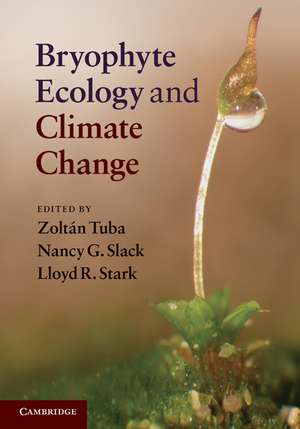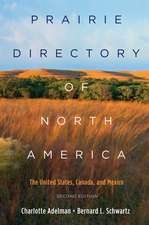Bryophyte Ecology and Climate Change
Editat de Zoltán Tuba, Nancy G. Slack, Lloyd R. Starken Limba Engleză Hardback – 5 ian 2011
| Toate formatele și edițiile | Preț | Express |
|---|---|---|
| Paperback (1) | 478.38 lei 6-8 săpt. | |
| Cambridge University Press – 5 ian 2011 | 478.38 lei 6-8 săpt. | |
| Hardback (1) | 979.87 lei 6-8 săpt. | |
| Cambridge University Press – 5 ian 2011 | 979.87 lei 6-8 săpt. |
Preț: 979.87 lei
Preț vechi: 1139.39 lei
-14% Nou
Puncte Express: 1470
Preț estimativ în valută:
187.52€ • 193.46$ • 158.71£
187.52€ • 193.46$ • 158.71£
Carte tipărită la comandă
Livrare economică 04-18 martie
Preluare comenzi: 021 569.72.76
Specificații
ISBN-13: 9780521767637
ISBN-10: 0521767636
Pagini: 528
Ilustrații: 79 b/w illus. 26 tables
Dimensiuni: 181 x 254 x 28 mm
Greutate: 1.16 kg
Editura: Cambridge University Press
Colecția Cambridge University Press
Locul publicării:Cambridge, United Kingdom
ISBN-10: 0521767636
Pagini: 528
Ilustrații: 79 b/w illus. 26 tables
Dimensiuni: 181 x 254 x 28 mm
Greutate: 1.16 kg
Editura: Cambridge University Press
Colecția Cambridge University Press
Locul publicării:Cambridge, United Kingdom
Cuprins
List of contributors; Preface; Part I. Introductory Chapters: 1. The ecological value of bryophytes as indicators of climate change Nancy G. Slack; 2. Bryophyte physiological processes in a changing climate: an overview Zoltán Tuba; Part II. Ecophysiology: 3. Climatic responses and limits of bryophytes: comparisons and contrasts with vascular plants Michael C. F. Proctor; 4. Effects of elevated air CO2 on bryophytes: a review Zoltán Tuba, Edit Ötvös and Ildikó Jócsák; 5. Seasonal and interannual variability of light and UV acclimation in mosses Niina M. Lappalainen, Anna Hyyryläinen and Satu Huttunen; Part III. Aquatic Bryophytes: 6. Ecological and physiological effects of changing climate on aquatic bryophytes Janice Glime; 7. Aquatic bryophytes under ultraviolet radiation Javier Martinez-Abaigar and Encarnación Núñez-Oliver; Part IV. Desert and Tropical Ecosystems: 8. Responses of a biological crust moss to increased monsoon precipitation and nitrogen deposition in the Mojave desert Lloyd R. Stark, D. Nicholas McLetchie, Stanley D. Smith and Melvin J. Oliver; 9. Ecology of bryophytes in Mojave desert biological soil crusts: effects of elevated CO2 on sex expression, stress tolerance, and productivity in the moss Syntrichia caninervis Mitt. John C. Brinda, Catherine Fernando and Lloyd R. Stark; 10. Responses of epiphytic bryophyte communities to simulated climate change in the tropics Jorge Jácome, S. Robbert Gradstein and Michael Kessler; Part V. Alpine, Arctic, and Antarctic Ecosystems: 11. Effects of climate change on tundra bryophytes Annika K. Jägerbrand, Robert G. Björk, Terry Callaghan and Rod Seppelt; 12. Alpine bryophytes as indicators for climate change: a case study from the Austrian Alps Daniela Hohenwallner, Harold G. Zechmeister, Dietmar Moserm, Harald Pauli, Michael Gottfried, Karl Reiter and Georg Grabherr; 13. Bryophytes and lichens in a changing climate: an Antarctic perspective Rod D. Seppelt; Part VI. Sphagnum and Peatlands: 14. Living on the edge: the effects of drought on Canada's western boreal peatlands Melanie Vile, Kimberli D. Scott, Erin Brault, R. Kellman Wieder and Dale H. Vitt; 15. The structure and functional features of sphagnum cover of the northern west Siberian mires in connection with forecasting global environmental and climatic changes Aleksei V. Naumov and Natalia P. Kosykh; 16. The southernmost sphagnum-dominated mires on the plains of Europe: formation, secondary succession, degradation and protection Janos Nagy; Part VII. Changes in Bryophyte Distribution with Climate Change: Data and Models: 17. The role of bryophyte paleoecology in quaternary climate reconstructions Gusztáv Jakab and Pál Sümegi; 18. Signs of climate change in the bryoflora of Hungary Tamás Pócs; 19. Can the effects of climate change on British bryophytes be distinguished from those resulting from other environmental changes? Jeffrey W. Bates and Christopher D. Preston; 20. Climate change and protected areas: how well do our rare bryophytes fare? Barbara J. Anderson and Ralf Ohlemuller; 21. Modeling the distribution of Sematophyllum substrumulosum (Hampe) E. Britton as a signal of climatic changes in Europe Cecília Sérgio, Rui Figueira and Rui Menezes; 22. Modelling bryophyte productivity across gradients of water availability using canopy form-function relationships Steven Rice, Nathali Neal, Jesse Mango and Kelly Black; Part VIII. Conclusions: 23. Bryophytes as predictors of greenhouse gas enrichment and current climate change L. Dennis Gignac; 24. Conclusions Nancy G. Slack and Lloyd R. Stark; Index.
Descriere
Explores how mosses can be used as monitors and experimental subjects for present and future climate change.










